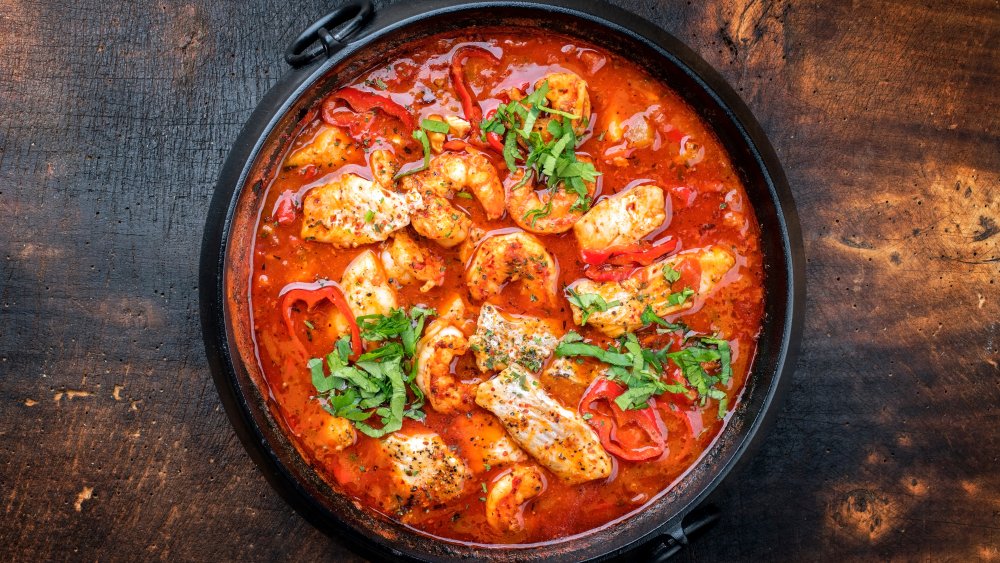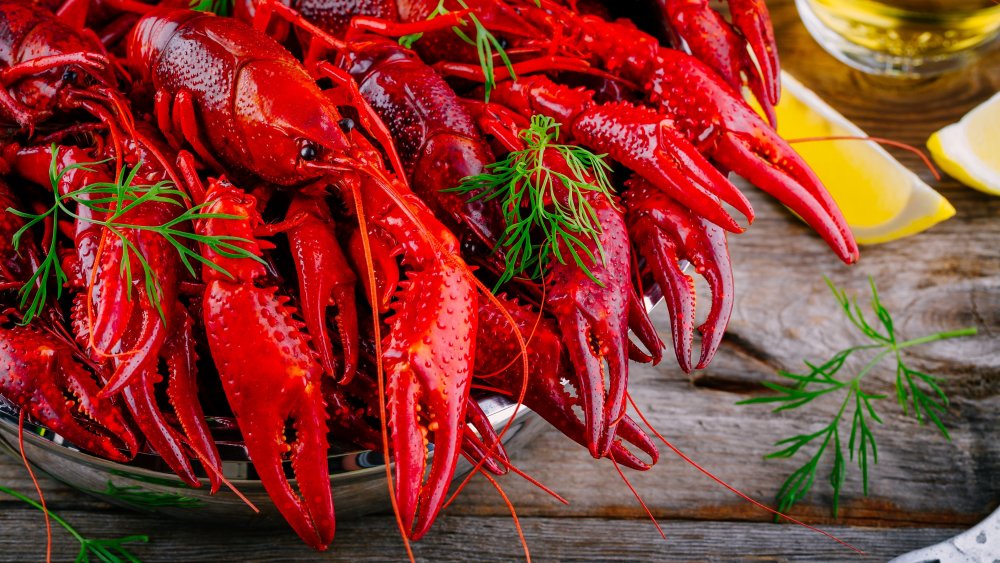The Real Difference Between Creole And Cajun Food
Creole and Cajun are two food terms that get thrown around interchangeably, but chefs who are from the Louisiana area, from where both foods hail, will have you know that there is (or once was) a difference between the two.
While opinions differ depending on who you ask, Tom Fitzmorris, a food critic who has covered the New Orleans restaurant scene for more than four decades (via No Menu), says that Creole food has origins as urban food eaten by the upper crust of society. Cajun food, on the other hand, is country food (via Forbes). However, he also notes that because there has been so much intermixing between the two styles over the years, there is no real difference anymore and the question of what is the difference between the two is solely academic.
Yet others proclaim that there still is a difference. Take, for example, the New Orleans staple Antoine's, which serves Creole dishes like oysters Rockefeller, crawfish Sardou, and frog leg provençal. These "hoity-toity" dishes would likely not be found in the bayou of Louisiana where the food is spicier and simpler.
Additional differences between the two cuisines
Perhaps the most noticeable difference comes down to the use of tomatoes. While Creole food tends to use tomatoes and tomato sauces, Cajun food doesn't (via Visit New Orleans).
The two groups come from different geographical locations as well. "Creole" was a term applied to both the French settlers in the area as well as the melting pot comprised of Europeans, Spanish, Native Americans, and African Americans, which lived in the same area and spoke with a French dialect.
On the other hand, the Cajuns originated in Nova Scotia who were kicked out by the British and sent to live in the bayous and swamps of western Louisiana.
But there has indeed been some cross-pollination of the two cuisines as there are a number of dishes that are present in both styles. Dishes that are synonymous with Louisiana like gumbo, jambalaya, crawfish etouffée, and shrimp remoulade can be found in both cuisines.

